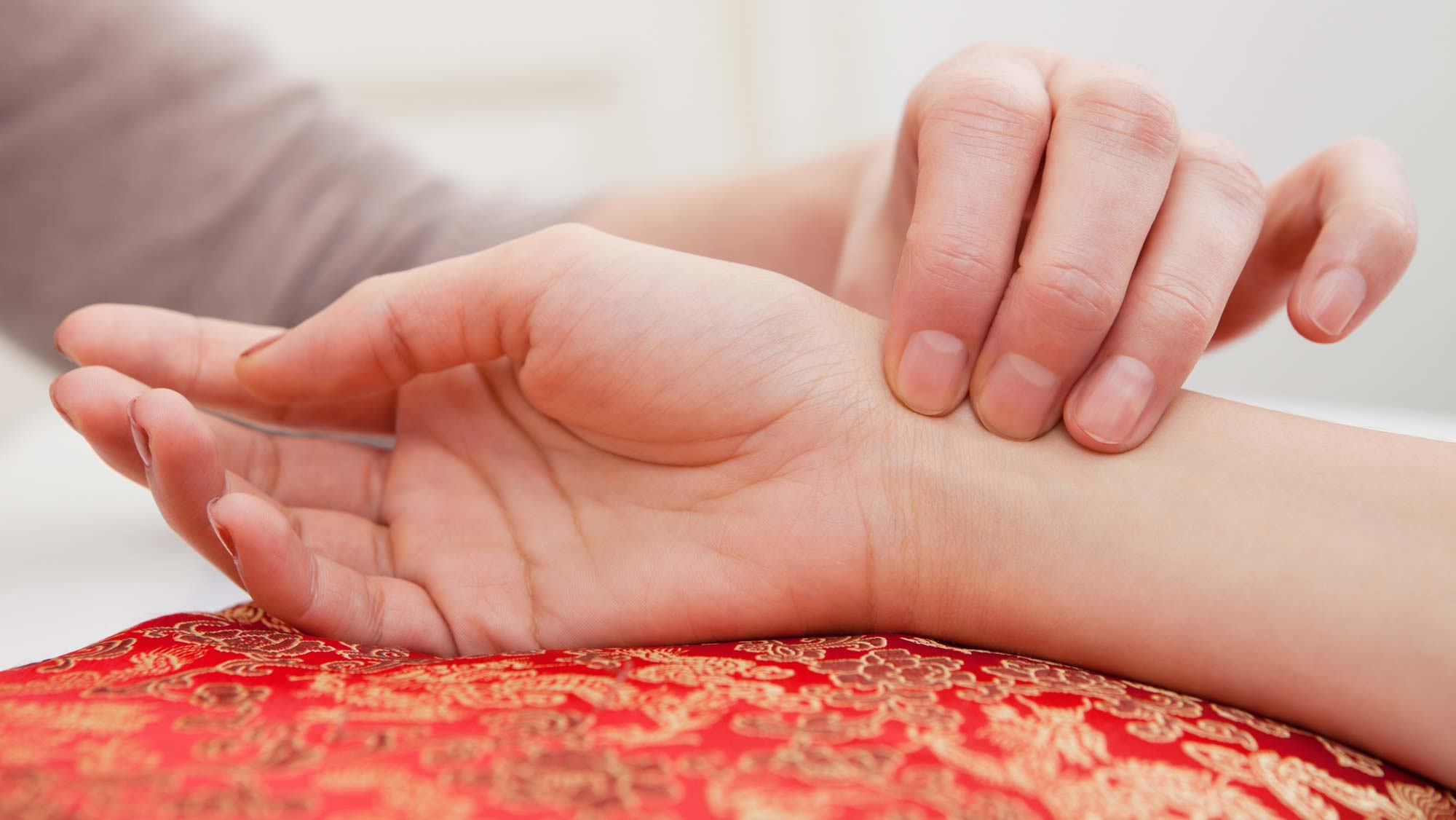
Most people reckon a check-up means blood pressure cuffs and maybe a thermometer, right? But Traditional Chinese Medicine uses a different playbook entirely. Not many realise that TCM practitioners might spot a problem just by checking your pulse or looking at your tongue, and there are over 28 different pulse qualities they can detect with their fingertips. It sounds unusual, but this centuries-old system dives deeper than surface symptoms and uncovers patterns that even modern tests can miss.
What are TCM Diagnosis Methods and Their Importance?
Traditional Chinese Medicine (TCM) diagnosis represents a sophisticated approach to understanding human health that differs markedly from Western medical diagnostic techniques. At its core, TCM focuses on identifying patterns of disharmony within the body’s interconnected systems, viewing health as a dynamic balance of energy and physiological functions.

Unlike conventional medical approaches that often isolate symptoms, Healthdirect Australia highlights that TCM diagnosis aims to comprehend the entire individual’s physical, emotional, and energetic landscape. Practitioners observe subtle interactions between bodily systems, seeking to understand underlying imbalances rather than merely treating surface-level manifestations.
Key diagnostic principles in TCM include:
Recognising the interconnectedness of body systems
Understanding energy flow (Qi) through meridian pathways
Evaluating the balance between Yin and Yang energies
Primary Diagnostic Methods in Traditional Chinese Medicine
TCM practitioners employ multiple sophisticated diagnostic techniques to gather comprehensive health insights. These methods include:
Pulse Diagnosis: A highly nuanced technique where practitioners assess blood vessel characteristics at different wrist positions, interpreting subtle variations that indicate potential health conditions.
Tongue Examination: Practitioners analyse tongue colour, coating, shape, and moisture levels as indicators of internal organ functioning and overall systemic health.
Visual and Auditory Assessment: Observing patient complexion, body movements, listening to vocal qualities, and assessing emotional expressions provide additional diagnostic information.
Questioning and Medical History: Detailed patient interviews explore lifestyle, emotional states, dietary habits, and specific symptoms to construct a holistic health profile.
These integrated diagnostic methods allow TCM practitioners to develop personalised treatment strategies that address root causes of health imbalances, promoting comprehensive wellness beyond symptom management.
The Theoretical Foundations of TCM Diagnosis
Traditional Chinese Medicine (TCM) diagnosis is grounded in a profound philosophical framework that views human health as a complex, interconnected system of energy and balance. Unlike contemporary Western medical approaches, TCM offers a holistic perspective that integrates physiological, psychological, and energetic dimensions of human experience.
The Fundamental Principles of TCM Theory
National Institutes of Health research highlights the intricate philosophical underpinnings of TCM diagnostic methods. The core theoretical foundations are built upon several key conceptual frameworks that guide practitioners in understanding health and disease.
These foundational principles include:
Qi (Life Energy): The fundamental energetic force that circulates through the body
Yin and Yang: Complementary forces representing dynamic balance and interaction
Five Elements Theory: Describing interconnected natural and physiological processes
Understanding Energy Flow and Systemic Balance
In TCM philosophy, health is not merely the absence of disease but a state of harmonious energy circulation. Qi represents the vital life force that flows through meridian pathways, connecting different bodily systems and organs. When this energy becomes blocked or imbalanced, practitioners believe that physical and emotional disruptions emerge.
The Yin and Yang concept represents complementary yet opposing energetic qualities. Yin embodies passive, cooling, and receptive characteristics, while Yang represents active, warming, and expansive energies. A state of optimal health occurs when these forces maintain a dynamic equilibrium.
The Five Elements Theory provides another sophisticated diagnostic framework, associating natural elements (Wood, Fire, Earth, Metal, Water) with specific organ systems, emotions, and physiological functions. Each element interacts with others in generating or controlling cycles, offering practitioners a nuanced method of understanding systemic relationships and potential imbalances.
Here is a table comparing key theoretical foundations in Traditional Chinese Medicine, clarifying each concept’s focus and its significance in the diagnostic process.
These theoretical foundations transform TCM diagnosis from a mere symptomatic assessment to a comprehensive exploration of an individual’s energetic landscape, enabling practitioners to develop deeply personalised treatment strategies that address root causes of physiological and emotional disharmony.
Key Techniques Used in TCM Diagnosis
Traditional Chinese Medicine (TCM) practitioners employ a sophisticated array of diagnostic techniques that go far beyond conventional medical assessment. These methods provide a comprehensive understanding of an individual’s health by examining multiple interconnected bodily signals and energetic patterns.
The Four Diagnostic Methods
Sydney Institute of Traditional Chinese Medicine highlights four primary diagnostic approaches that form the cornerstone of TCM diagnostic practice:
Observation (Wang): Visual assessment of physical appearance
Listening and Smelling (Wen): Evaluating vocal qualities and body odors
Questioning (Wen): Detailed patient history and symptom exploration
Palpation (Qie): Physical touch and pulse examination
Detailed Diagnostic Techniques
Pulse Diagnosis represents one of the most intricate TCM diagnostic methods. Practitioners assess blood vessel characteristics at different wrist positions, interpreting subtle variations that indicate potential health conditions. Each pulse position corresponds to specific organ systems, allowing practitioners to map intricate energetic imbalances.
Tongue Examination provides another critical diagnostic insight. Practitioners analyse tongue colour, coating, shape, and moisture levels as indicators of internal organ functioning. The tongue’s appearance can reveal important information about systemic health, including potential inflammation, digestive issues, and overall energy balance.
Visual Assessment involves observing patient complexion, body movements, and emotional expressions. Practitioners look for subtle signs of energy disruption, such as skin tone variations, muscle tension, and non-verbal communication indicators that might suggest underlying health challenges.
These integrated diagnostic techniques allow TCM practitioners to develop personalised treatment strategies for natural recovery, addressing root causes of health imbalances rather than merely treating surface-level symptoms.
Below is a table summarising the four primary diagnostic methods in Traditional Chinese Medicine, highlighting their core focus and examples of what practitioners assess or observe.
| Diagnostic Method | Core Focus | Examples of Assessment |
| Observation (Wang) | Visual assessment of physical appearance | Complexion, body movements, emotional signs |
| Listening and Smelling | Evaluation of vocal qualities and odours | Voice tone, breathing sounds, body odour |
| Questioning (Wen) | Detailed patient history and symptom exploration | Lifestyle, emotions, diet, medical history |
| Palpation (Qie) | Assessment through touch, primarily pulse | Pulse quality, tenderness, temperature |
Practical Applications of TCM Diagnosis in Health Care
Traditional Chinese Medicine (TCM) diagnosis transcends theoretical frameworks, offering pragmatic health insights that complement modern medical approaches. By integrating ancient wisdom with contemporary understanding, TCM provides nuanced strategies for addressing complex health challenges.
Holistic Health Management
Healthdirect Australia highlights TCM’s comprehensive approach to health management, which focuses on prevention and systemic balance rather than isolated symptom treatment. This approach enables practitioners to identify potential health disruptions before they manifest as serious conditions.
Key areas where TCM diagnosis demonstrates practical applications include:
Chronic condition management
Stress and emotional health support
Preventative wellness strategies
Complementary treatment for complex health issues
Targeted Health Interventions
Pain Management represents a significant area where TCM diagnosis provides targeted interventions. Comprehensive pain management strategies leverage diagnostic insights to develop personalised treatment plans that address underlying energy imbalances contributing to chronic discomfort.
Metabolic and Digestive Health benefits substantially from TCM diagnostic techniques. Practitioners can identify subtle digestive system imbalances through tongue examination and pulse diagnosis, enabling early intervention and lifestyle recommendations that support optimal metabolic functioning.
Emotional and Neurological Wellness is another domain where TCM diagnosis offers unique insights. By recognising the interconnection between physical symptoms and emotional states, practitioners can develop holistic approaches that support neurological health and emotional equilibrium.
TCM diagnostic methods continue to evolve, with modern research exploring innovative ways to integrate traditional knowledge with contemporary scientific methodologies. This ongoing development ensures that TCM remains a dynamic, responsive approach to understanding and maintaining human health.
How TCM Diagnosis Methods Benefit Athletes and Active Individuals
Traditional Chinese Medicine (TCM) diagnosis offers athletes and active individuals a sophisticated approach to understanding their body’s performance, recovery, and potential vulnerabilities. By examining intricate energy patterns and systemic interactions, TCM provides insights that extend far beyond conventional sports medicine assessments.
Performance and Recovery Insights
Healthdirect Australia highlights TCM’s holistic approach to health, which is particularly valuable for athletes seeking comprehensive performance optimization. TCM diagnostic methods enable practitioners to identify subtle energy imbalances that might impact athletic performance long before they manifest as significant physical limitations.
Key benefits for athletes include:
Early detection of potential energy blockages
Personalised recovery strategies
Comprehensive understanding of physiological stress
Proactive management of potential injury risks
Targeted Athletic Performance Support
Injury Prevention represents a critical domain where TCM diagnosis demonstrates remarkable value. Sports recovery and injury support strategies leverage diagnostic techniques to map potential muscular and energetic weaknesses, allowing athletes to address underlying imbalances before they result in serious injuries.
Metabolic and Energy Management is another crucial area where TCM provides unique insights. Pulse and tongue diagnostics can reveal nuanced information about an athlete’s metabolic efficiency, stress levels, and potential nutritional requirements, enabling more targeted training and recovery protocols.
Neurological and Emotional Resilience plays a significant role in athletic performance. TCM diagnostic methods help practitioners understand the intricate connections between physical exertion, emotional states, and overall energy balance, supporting athletes in maintaining peak mental and physical condition.
By integrating traditional diagnostic wisdom with contemporary understanding of human physiology, TCM offers athletes a sophisticated approach to understanding and optimizing their physical potential.
Ready to Personalise Your TCM Diagnosis Experience in Melbourne?
Understanding how TCM diagnosis captures imbalances in Qi, yin and yang, and the body’s internal environment can leave you searching for guidance that truly appreciates your unique health story. If you are feeling unsure about how to address ongoing pain, stress, fatigue, or performance plateaus, it is common to feel frustrated by short-term fixes that do not take your whole system into account. At JG Alternative Healthcare, every care plan is customised using the traditional skills described in this article, including detailed pulse and tongue analysis, lifestyle discussions, and holistic strategies.
If you want professional support for issues like musculoskeletal pain, sports recovery, neurological tension, or general wellbeing, why not take the next step today? Visit JG Alternative Healthcare to learn about our acupuncture, natural recovery options, and sports injury support services. Book your initial consultation and experience a registered approach to TCM diagnosis that puts your needs first.
Frequently Asked Questions
What are the primary diagnostic methods used in TCM?
TCM practitioners employ several key diagnostic methods, including pulse diagnosis, tongue examination, visual and auditory assessments, and detailed patient questioning, to gather comprehensive health insights.
How does TCM view the balance of energy in the body?
TCM emphasizes the importance of Qi, the vital life energy, and the balance between Yin and Yang energies. Health is seen as a dynamic equilibrium of these energies, where blockages or imbalances can lead to physical and emotional disruptions.
What role does tongue examination play in TCM diagnosis?
Tongue examination in TCM is crucial as practitioners analyse aspects such as colour, coating, shape, and moisture levels to assess internal organ functioning and overall systemic health.
How can athletes benefit from TCM diagnostic methods?
Athletes can gain insights into their performance and recovery through TCM by identifying energy imbalances and developing personalised strategies for injury prevention, metabolic management, and emotional resilience.
Recommended
Get In Touch
Book Your Appointment Online
Moonee Ponds Or South Morang



